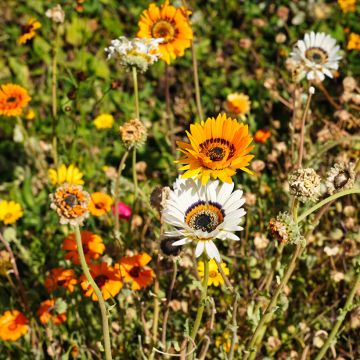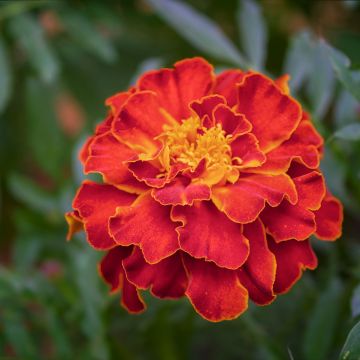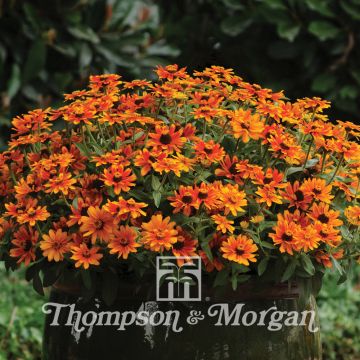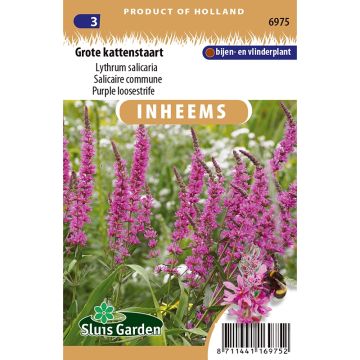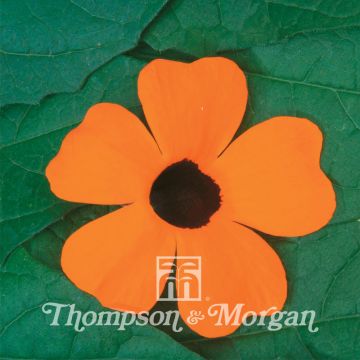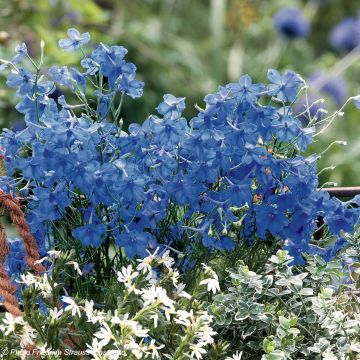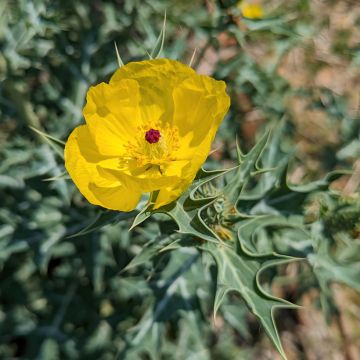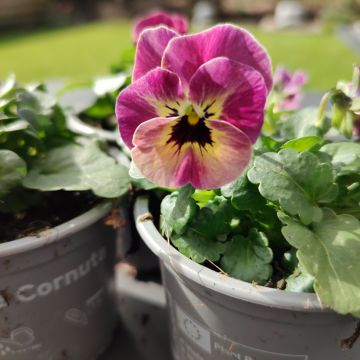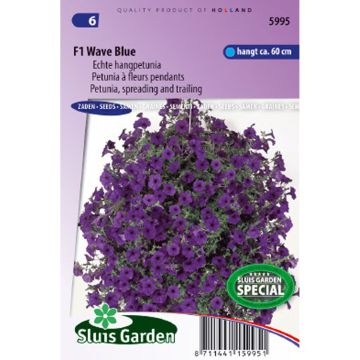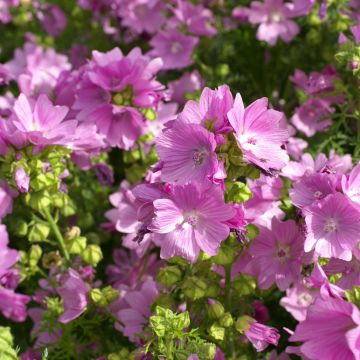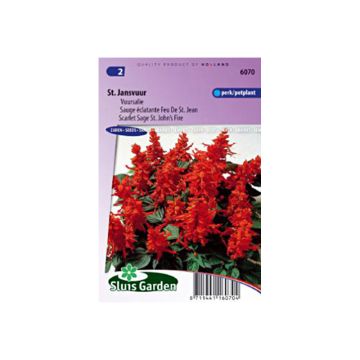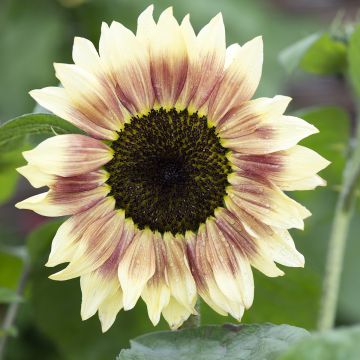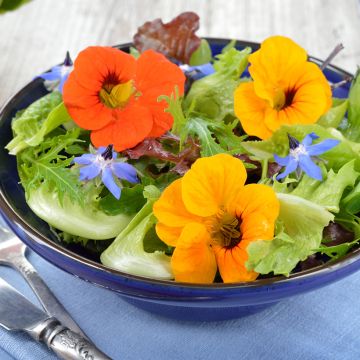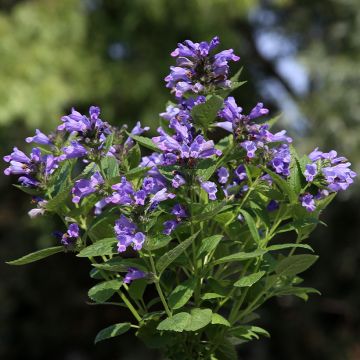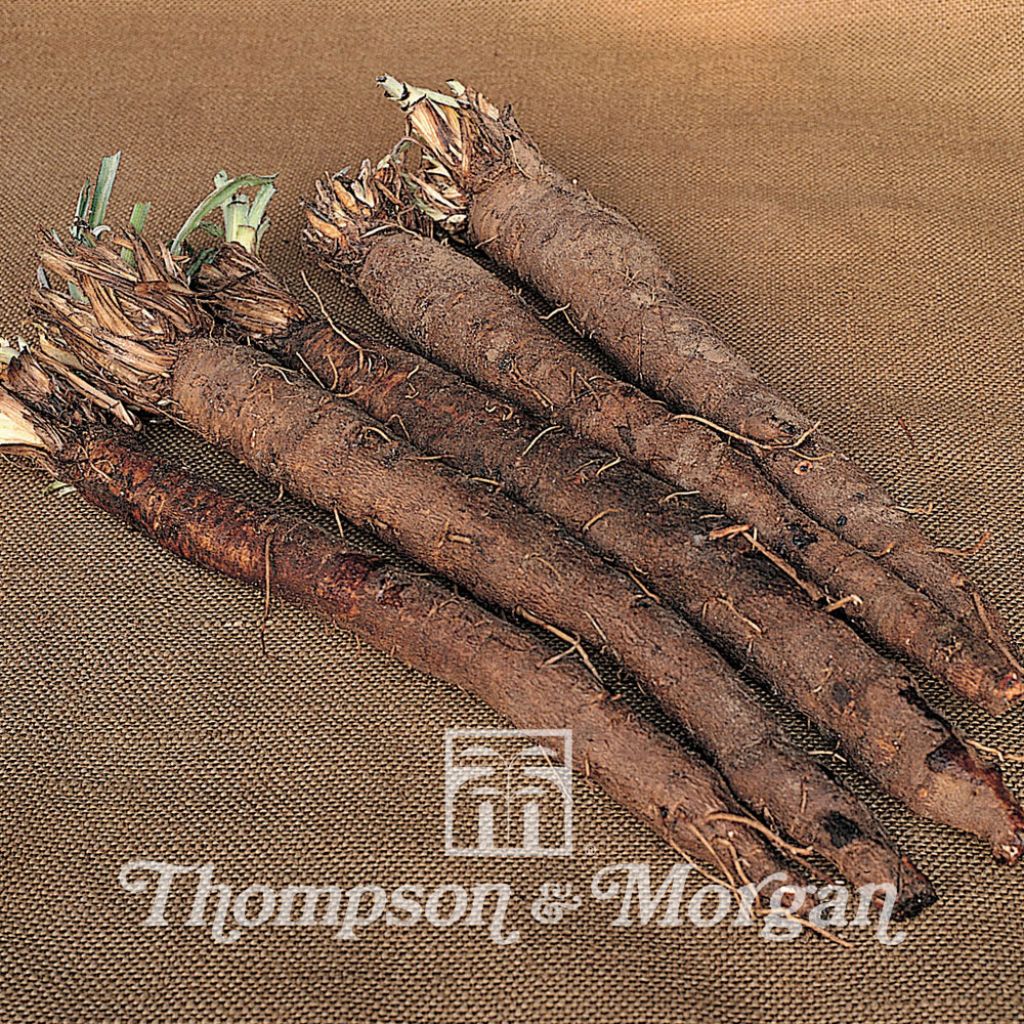

Scorzonera Hispanica
Scorzonera hispanica
Scorzonera hispanica
Black Salsify, Spanish Salsify, Black Oyster Plant
This plant carries a 6 months recovery warranty
More information
We guarantee the quality of our plants for a full growing cycle, and will replace at our expense any plant that fails to recover under normal climatic and planting conditions.
Seed-only orders are dispatched by sealed envelope. The delivery charge for seed-only orders is €3.90.
Does this plant fit my garden?
Set up your Plantfit profile →
Description
Scorzonera hispanica, also known as Spanish Scorzonera or black salsify, is an ancient vegetable, somewhat forgotten, to be rediscovered for its delicate flavour and high nutritional value. This perennial plant is cultivated as an annual or biennial, with its black and fleshy root consumed cooked and its young leaves in salads. It produces bright yellow heads in summer, carried at the end of slender stems. La Quintinie, the gardener of the Sun King, described it as follows: " [...] it is one of our main roots, admirable when cooked, both for the pleasure of taste and for the health of the body ". It is sown directly in place in spring for harvest in October.
Native to dry areas of the Caucasus and southern Europe, Scorzonera hispanica is a plant in the family Asteraceae, which differs from cultivated salsify, also consumed, known as Tragopogon porrifolius. Black salsify forms an upright rosette of lanceolate leaves, tapering at the top. The clumps measure 40cm (16in) in height and 20cm (8in) in width. The flowers appear in summer. They are bright yellow heads carried at the end of 1-metre (3 feet)-tall stems. The thick and long root can reach 1 metre (3 feet) in length and 2cm (1in) in width. Its fine and white flesh is covered with a black, somewhat rough skin. Unlike cultivated salsify, it does not become woody. It contains a significant amount of carbohydrates different from starch (inulin), and allantoin, a compound with well-known emollient properties. It is also rich in minerals such as potassium, iron, and calcium, as well as vitamin E. It also contains provitamin A, vitamins from the B and C groups, albeit in smaller quantities.
Plant Spanish Scorzonera in the vegetable garden, not far from carrots as it seems to protect them from flies. This plant requires a light, deep, and loose soil, free of stones, and a sunny location. Harvest the roots in autumn of the first year or, for August sowings, during the second season after flowering. The roots will then be much larger. The young leaves can be consumed raw in salads.
Report an error about the product description
Flowering
Foliage
Plant habit
Botanical data
Scorzonera
hispanica
Asteraceae
Black Salsify, Spanish Salsify, Black Oyster Plant
Central Europe
Other Thompson and Morgan seeds
Planting and care
Sowing:
Sowing of black salsify is done directly in the open ground, preferably in loose, deep, light soil enriched with well-rotted manure. They can be done from March to May (annual culture) or in August-September (biennial culture). This second method yields higher root quality and yield, but requires a longer immobilized plot. Sow in deep furrows of 2cm (1in), with rows spaced 25cm (10in) apart. The soil should remain moist, which can be facilitated by mulching. Thin the seedlings when the plants have 3 leaves, keeping one every 10cm (4in).
Cultivation:
Watering should be generous. If a plant produces a flower stem, it is preferable to remove it in order to strengthen the root. Black salsify can remain in the ground for up to 3 years.
Harvest:
Harvesting of black salsify is done from October to March, as needed. Harvesting is delicate, so it is best to use a fork spade: if the soil is slightly heavy, it is useful to dig a parallel trench to the sowing and tilt the plants into it. Mulch generously with dead leaves to facilitate winter harvesting.
Sowing period
Intended location
This item has not been reviewed yet - be the first to leave a review about it.
Flower seeds
Haven't found what you were looking for?
Hardiness is the lowest winter temperature a plant can endure without suffering serious damage or even dying. However, hardiness is affected by location (a sheltered area, such as a patio), protection (winter cover) and soil type (hardiness is improved by well-drained soil).

Photo Sharing Terms & Conditions
In order to encourage gardeners to interact and share their experiences, Promesse de fleurs offers various media enabling content to be uploaded onto its Site - in particular via the ‘Photo sharing’ module.
The User agrees to refrain from:
- Posting any content that is illegal, prejudicial, insulting, racist, inciteful to hatred, revisionist, contrary to public decency, that infringes on privacy or on the privacy rights of third parties, in particular the publicity rights of persons and goods, intellectual property rights, or the right to privacy.
- Submitting content on behalf of a third party;
- Impersonate the identity of a third party and/or publish any personal information about a third party;
In general, the User undertakes to refrain from any unethical behaviour.
All Content (in particular text, comments, files, images, photos, videos, creative works, etc.), which may be subject to property or intellectual property rights, image or other private rights, shall remain the property of the User, subject to the limited rights granted by the terms of the licence granted by Promesse de fleurs as stated below. Users are at liberty to publish or not to publish such Content on the Site, notably via the ‘Photo Sharing’ facility, and accept that this Content shall be made public and freely accessible, notably on the Internet.
Users further acknowledge, undertake to have ,and guarantee that they hold all necessary rights and permissions to publish such material on the Site, in particular with regard to the legislation in force pertaining to any privacy, property, intellectual property, image, or contractual rights, or rights of any other nature. By publishing such Content on the Site, Users acknowledge accepting full liability as publishers of the Content within the meaning of the law, and grant Promesse de fleurs, free of charge, an inclusive, worldwide licence for the said Content for the entire duration of its publication, including all reproduction, representation, up/downloading, displaying, performing, transmission, and storage rights.
Users also grant permission for their name to be linked to the Content and accept that this link may not always be made available.
By engaging in posting material, Users consent to their Content becoming automatically accessible on the Internet, in particular on other sites and/or blogs and/or web pages of the Promesse de fleurs site, including in particular social pages and the Promesse de fleurs catalogue.
Users may secure the removal of entrusted content free of charge by issuing a simple request via our contact form.
The flowering period indicated on our website applies to countries and regions located in USDA zone 8 (France, the United Kingdom, Ireland, the Netherlands, etc.)
It will vary according to where you live:
- In zones 9 to 10 (Italy, Spain, Greece, etc.), flowering will occur about 2 to 4 weeks earlier.
- In zones 6 to 7 (Germany, Poland, Slovenia, and lower mountainous regions), flowering will be delayed by 2 to 3 weeks.
- In zone 5 (Central Europe, Scandinavia), blooming will be delayed by 3 to 5 weeks.
In temperate climates, pruning of spring-flowering shrubs (forsythia, spireas, etc.) should be done just after flowering.
Pruning of summer-flowering shrubs (Indian Lilac, Perovskia, etc.) can be done in winter or spring.
In cold regions as well as with frost-sensitive plants, avoid pruning too early when severe frosts may still occur.
The planting period indicated on our website applies to countries and regions located in USDA zone 8 (France, United Kingdom, Ireland, Netherlands).
It will vary according to where you live:
- In Mediterranean zones (Marseille, Madrid, Milan, etc.), autumn and winter are the best planting periods.
- In continental zones (Strasbourg, Munich, Vienna, etc.), delay planting by 2 to 3 weeks in spring and bring it forward by 2 to 4 weeks in autumn.
- In mountainous regions (the Alps, Pyrenees, Carpathians, etc.), it is best to plant in late spring (May-June) or late summer (August-September).
The harvesting period indicated on our website applies to countries and regions in USDA zone 8 (France, England, Ireland, the Netherlands).
In colder areas (Scandinavia, Poland, Austria...) fruit and vegetable harvests are likely to be delayed by 3-4 weeks.
In warmer areas (Italy, Spain, Greece, etc.), harvesting will probably take place earlier, depending on weather conditions.
The sowing periods indicated on our website apply to countries and regions within USDA Zone 8 (France, UK, Ireland, Netherlands).
In colder areas (Scandinavia, Poland, Austria...), delay any outdoor sowing by 3-4 weeks, or sow under glass.
In warmer climes (Italy, Spain, Greece, etc.), bring outdoor sowing forward by a few weeks.


































